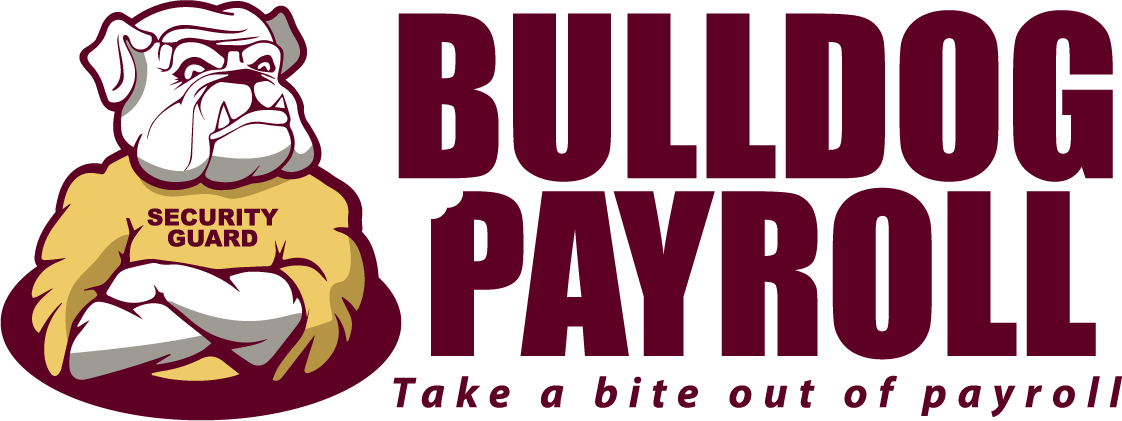Payroll Taxes Explained
So you have finally started that small business of yours that you have always dreamed of. It is fun and exciting as it should, but now you are left with one burning question. What are payroll taxes?
Sure, you've heard of payroll taxes and understand that they're essential to running a business. Yet, the inner workings of payroll taxes are still nothing more than a mystery to you.
You put so much effort into bringing this dream of yours to life. All you need is knowledge about these key components of payroll taxes to keep your business going.
Having payroll taxes explained to business owners is Bulldog Payroll's specialty. Down below, we will provide you all you need to know.
Mandatory Employer Payroll Taxes Explained
The first of mandatory employer payroll taxes to understand is the
Federal Income Tax. This tax is paid by withholding a certain portion of the earnings that employees make. Employers determine what this portion is by having their employees sign a
W-4 form upon being hired.
Social Security and Medicare taxes are two other taxes an employer is also responsible for paying. That said, certain wages and compensation for both social security and medicare are not the responsibility of the employer to pay taxes on. For example, the wages from sick leave and family leave provided by social security are not the responsibility of the employer to pay.
There is also an Additional Medicare Tax that an employer must withhold if they pay an employee over $200,000 a year. While the employer must start withholding wages, this tax is imposed on the employee only.
When it comes to the Federal Unemployment Tax, an employer must determine if they must pay the tax based on specific criteria. This criterion is provided by the general test, household employees test, and farmworkers test. Should an employer find that they meet the criteria of either of these three tests, then they will have to pay the Federal Unemployment Tax.
Who Pays the Payroll Tax?
It might seem obvious that it is the employer that pays all the payroll taxes that they are responsible for. In reality, it is the employees that pay taxes rather than the employer.
This is because it is technically the employee's earnings that are being sent to the government by the employer rather than both employer and employee splitting the burden of the tax amongst one another.
Whatever capital an employee might be providing, the tax burden will ultimately fall on them.
Tax Forms to Be Familiar With
The first tax form to be familiar with besides the W-4 is the
8850 form. This form is used to determine if your new employee
is from a targeted group.
The I-9 is important to complete when hiring a new worker because it verifies who an employee is. The I-9 is also proof of work authorization for the employee.
The next form is the 940. The 940 form is what is used to report the Federal Unemployment Tax. The 941 is the form used to report the earnings withheld from employees to pay the income tax, social security tax, and Medicare tax.
The 943 form is similar to the 941 one in that it reports the income, social security, and Medicare taxes. The difference is that this applies to agricultural workers. The 944 form also reports these taxes, but this form is used by businesses whose annual liability for those taxes is under $1000.
Lastly is
the 945 form. This form will report earnings not related to payroll earnings such as gambling winnings or pensions.
Is payroll a thorn in your side? Let us handle all the stress related to payroll so you don't have to...
Withholding Wages and Depositing Taxes
When depositing employer payroll taxes, two different schedules can be followed social security and medicare taxes. These deposits are either monthly or semi-weekly.
Determining how much of an employee's wages to withhold depends entirely on what type of tax an employer is withholding for. Determining how much to hold for the federal income tax will vary from employee to employee due to how they file their W-4 form.
Determining how much to withhold for social security and medicare, however, is easier to determine. For these taxes, there is an employee tax rate.
This rate can change, so be sure to keep up on the most current rate. Simply take every payment and multiply that number by whatever the tax rate is for social security and medicare.
The Federal Unemployment Tax is not withheld from the wages of employees. An employer only needs to determine if they are responsible for paying the tax. Depositing for the Federal Unemployment Tax takes place every quarter.
Lastly, there are statutory nonemployees. As far as taxes go, these types of employees are considered self-employees and are therefore not the employer's responsibility when it comes to federal taxes.
All federal tax deposits must be done using the EFT. To do so, you have a few options. The first is to deposit the EFT using what is called an EFTPS. The purpose of the EFTPS allows a person to file their taxes privately and securely.
If you do not want to use this method, you can hire someone to do it for you. A payroll service or a trustworthy third - party can be hired to use EFTPS for you to send your EFT.
Trustworthy Payroll Professionals
you understand their inner workings, payroll taxes are much less daunting.
While educating yourself on payroll taxes is great, having payroll taxes explained to you one on one goes a long way. At Bulldog Payroll, we have countless professionals that can provide you with any assistance you need regarding your payroll tax needs.
So go ahead and schedule your consultation today, and we will make sure your payroll tax needs are taking care of.
Are you looking for more payroll processing information? Check out our
Ultimate Guide to Payroll Processing.
Is payroll a thorn in your side? Let us handle all the stress related to payroll so you don't have to...










